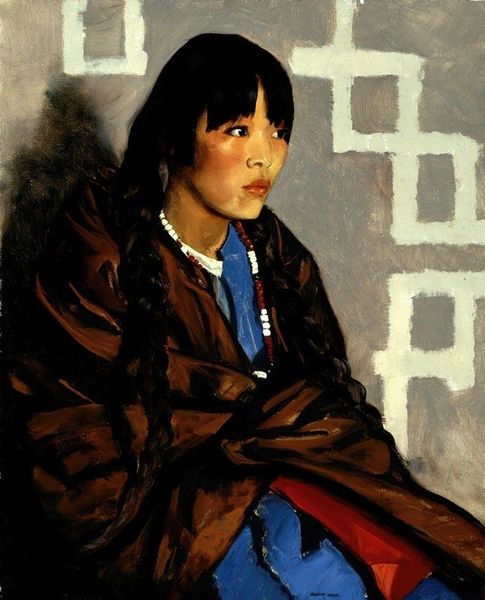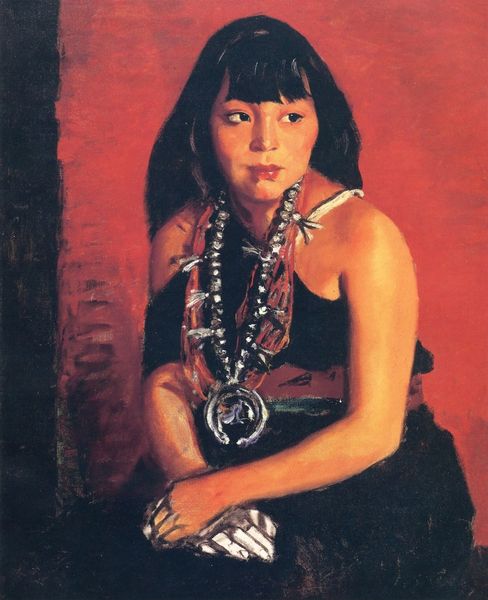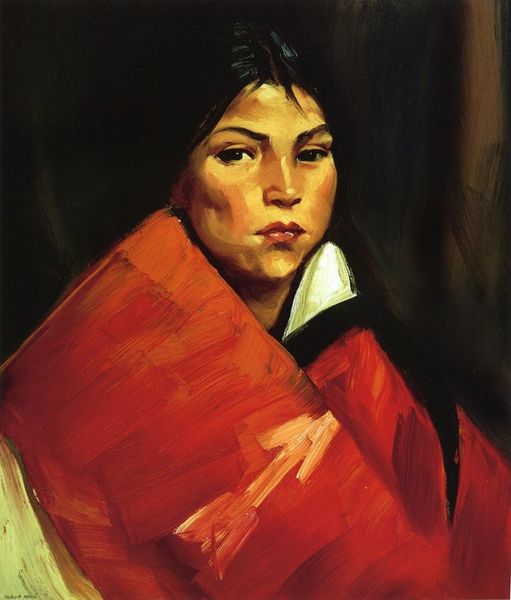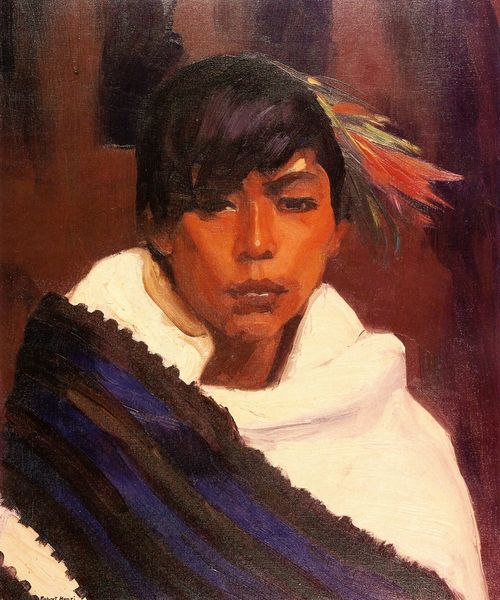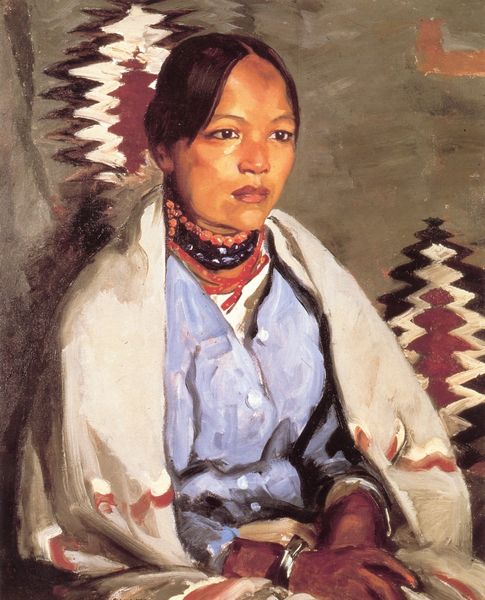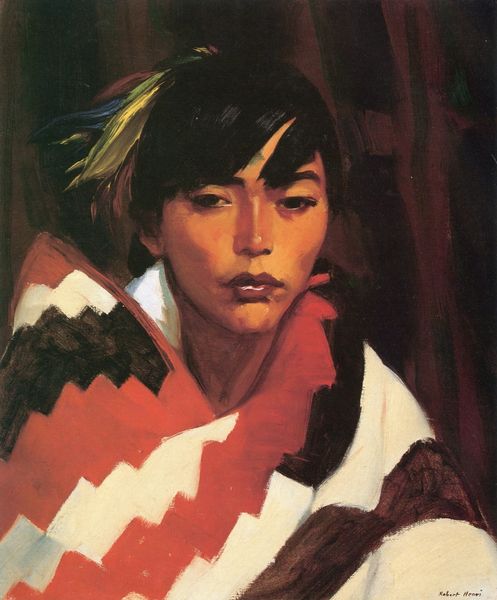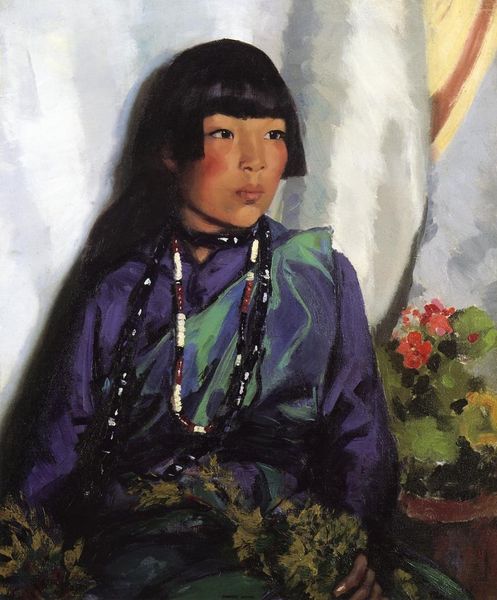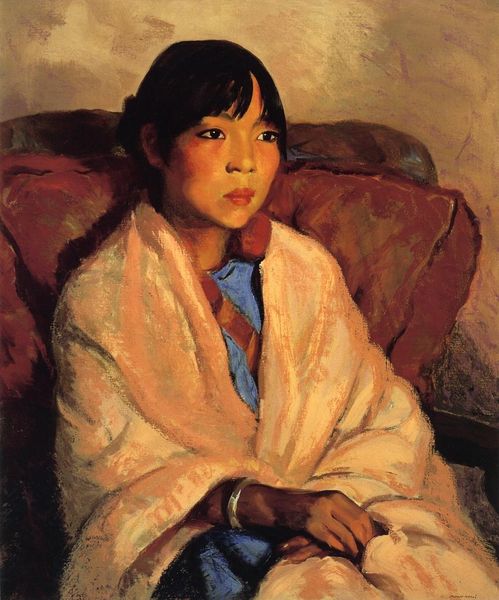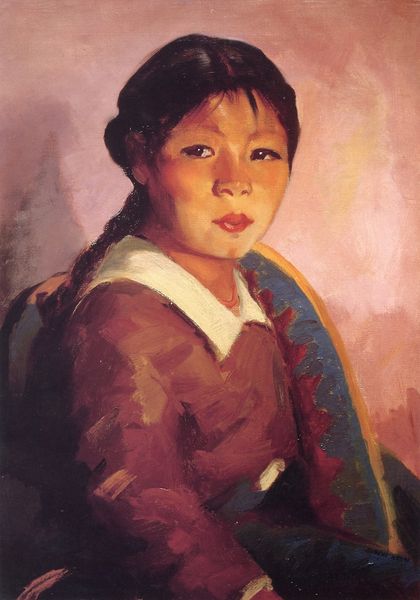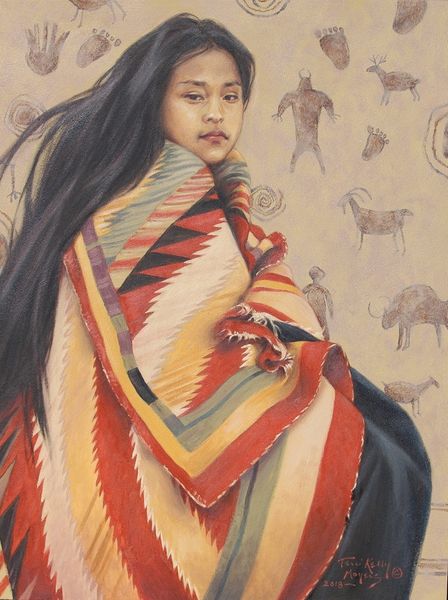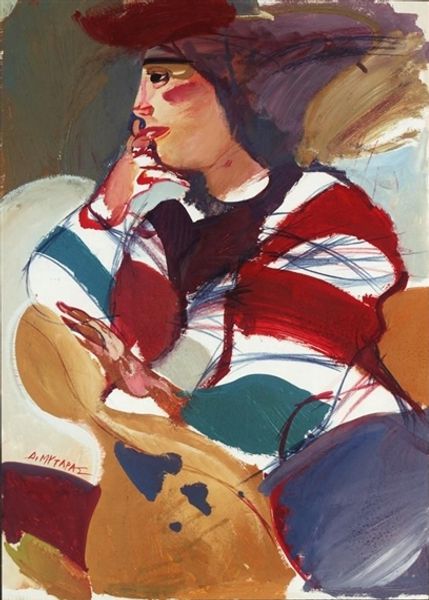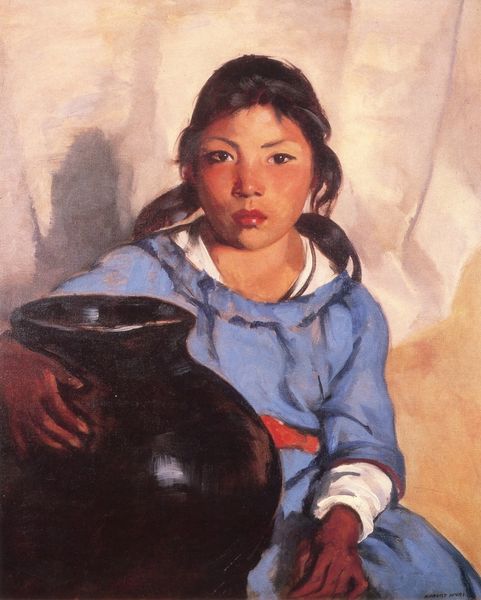
painting, oil-paint
#
portrait
#
painting
#
oil-paint
Copyright: Public domain
Editor: This is Robert Henri's 1917 painting, Julianita, rendered in oil. It strikes me as a pretty standard portrait at first glance, but her wrap is interesting. How do you interpret this work? Curator: Well, let's delve a bit deeper than "standard," shall we? This portrait of Julianita exists within a complex historical context. Think about the Ashcan School, which Henri was a key figure in, and its focus on depicting everyday life. But *whose* everyday life was deemed worthy of representation? Henri, like many artists of his time, engaged with Indigenous communities, but often through a lens of romanticism and, let’s be honest, cultural appropriation. Consider the background and the blanket - can we really view this work apart from its time, when Indigenous cultures were being marginalized? Editor: So you're saying the very act of portraying Julianita is loaded with historical power dynamics? Curator: Precisely. It’s crucial to interrogate the artist’s intentions, his gaze, and how the subject is positioned. Is Julianita presented as an individual or as a symbol of a culture exoticized for a white audience? What's her agency in this representation? It's important to think of identity, and who has the right to depict it. And even consider the rise of modernism alongside the work, do you see the correlation in the simplification of forms and planes of color? Editor: I didn't think of the power dynamic like that! I was too focused on the surface. Curator: Art history is never neutral, is it? By understanding the social and historical currents that informed Henri's work, we can begin to have a more informed conversation about representation, agency, and the responsibility of the artist. Editor: I will definitely look at these older portraits from a more critical perspective now. Thank you for widening my views.
Comments
No comments
Be the first to comment and join the conversation on the ultimate creative platform.
